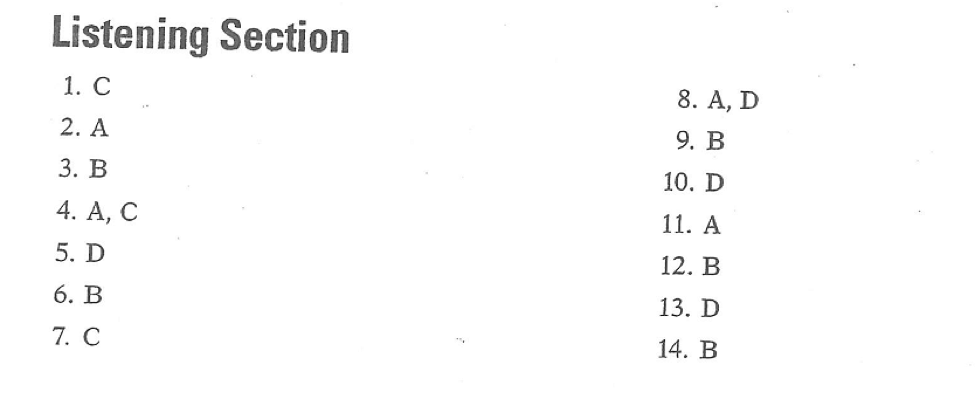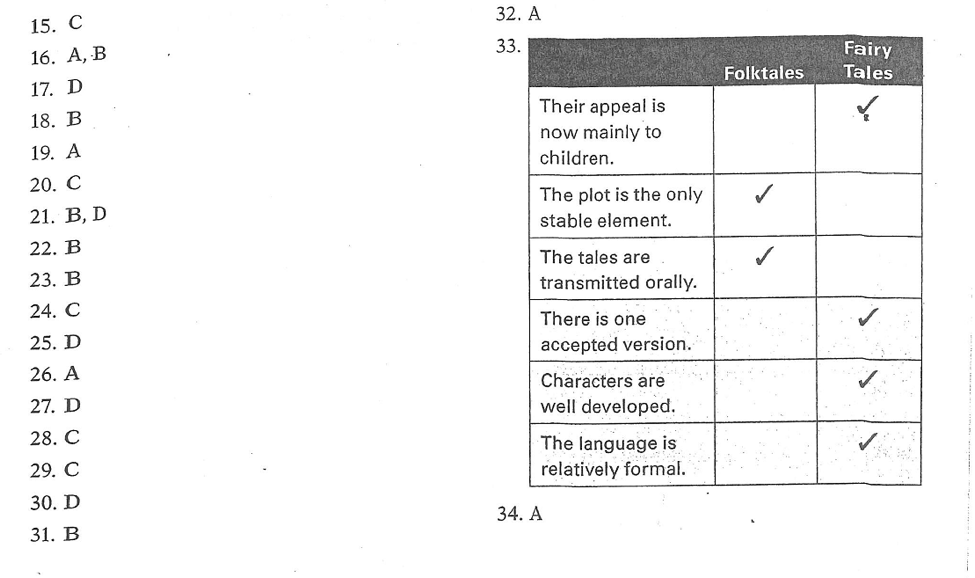TOEFL IBT Listening Practice Test 28 from Official TOEFL iBT Test with Audio Volume 1 Solution


——————————————————————————-
TOEFL IBT Listening Practice Test 28 from Official TOEFL iBT Test with Audio Volume 1 Solution Transcripts
TRACK 22 TRANSCRIPT
Narrator
Listen to a conversation between a student and a counselor at the university counseling center.
Student
Hi, thanks for seeing me on such short notice.
Counselor
No problem. How can I help?
Student
Well, I think I might’ve made a mistake coming to this school.
Counselor
What makes you say that?
Student
I m a little overwhelmed by the size of this place. I come from a small town. There were only 75 of us in my high school graduating class. Everyone knew everyone; we all grew up together.
Counselor
So it’s a bit of a culture shock for you, being one of 15,000 students on a big campus in an unfamiliar city.
Student
That’s an understatement. I just can’t get comfortable in class, or in the dorms, you know, socially.
Counselor
Hmm, well—let’s start with your academics. Tell me about your classes.
Student
I’m taking mostly introductory courses, and some are taught in these huge lecture halls.
Counselor
And you’re having trouble keeping pace with the material?
Student
No, in fact, I got an A on my first economics paper. It’s just that, it’s so impersonal. I’m not used to it.
Counselor
Are all your classes impersonal?
Student
Nah … It’s just that, for example, in sociology yesterday, the professor asked a question. So I raised my hand … several of us raised our hands … and I kept my hand up because I did the reading and knew the answer. But the professor just answered his own question and continued with the lecture.
Counselor
Well, in a big room, it’s possible he didn’t notice you. Maybe he was trying to save time. In either case, 1 wouldn’t take it personally.
Student
I suppose. But I just don’t know how to, you know, distinguish myself.
Counselor
Why not stop by his office during office hours?
Student
That wouldn’t seem right, y’know … taking time from other students who need help.
Counselor
Don’t say that. That’s what office hours are for. There’s no reason you couldn t pop in to say hi, to, uh, to make yourself known. If you’re learning a lot in class, let the professor know. Wouldn’t you appreciate positive feedback if you were a professor?
Student
You’re right. That’s a good idea.
Counselor
OK, uh, let’s turn to your social life. How’s it going in the dorms?
Student
I don’t have much in common with my roommate or anyone else I’ve met so far. Everyone’s into sports, and I’m more artsy, you know, into music. I play the cello.
Counselor
Ahhh. Have you been playing long?
Student
Since age 10. It’s a big part of my life. At home, I was the youngest member of our community orchestra.
Counselor
You’re not going to believe this! There’s a string quartet on campus—all students. And it so happens the cellist graduated last year. They’ve been searching high and low for a replacement, someone with experience. Would you be interested in auditioning?
Student
Absolutely! I wanted to get my academic work settled before pursuing my music here, but I think this would be a good thing for me. I guess if I really want to fit in here, I should find people who love music as much as I do. Thank you!
Counselor
My pleasure.
——————————————————————————-
TRACK23 TRANSCRIPT
Narrator
Listen to part of a lecture in a sociology class.
Professor
Have you ever heard the one about alligators living in New York sewers? The story goes like this: a family went on vacation in Florida, and bought a couple of baby alligators as presents for their children, then returned from vacation to New York, bringing the alligators home with them as pets. But the alligators would escape and find their way into the New York sewer system where they started reproducing, grew to huge sizes and now strike fear into sewer workers. Have you heard this story? Well, it isn’t true and it never happened, but despite that, the story’s been around since the 1930s.
Or how about the song “Twinkle, twinkle, little star”? You know “Twinkle, twinkle, little star, how I wonder what you are ..Well, we’ve all heard this song. Where am I going with this? Well, both the song and the story are examples of memes, and that’s what we’ll talk about, the theory of memes.
A meme is defined as a piece of information copied from person to person. By this definition, most of what you know … ideas, skills, stories, songs … are memes. All the words you know, all the scientific theories you’ve learned, the rules your parents taught you to observe … all are memes that have been passed on from person to person.
So what? … you may say. Passing on ideas from one person to another is nothing new … Well, the whole point of defining this familiar process as transmission of memes is so that we can explore its analogy with the transmission of genes.
As you know, all living organisms pass on biological information through the genes. What’s a gene? A gene is a piece of biological information that gets copied, or replicated, and the copy, or replica, is passed on to the new generation. So genes are defined as replicators …
Genes are replicators that pass on information about properties and characteristics of organisms. By analogy, memes also get replicated and in the process pass on cultural information from person to person, generation to generation. So memes are also replicators. To be a successful replicator, there are three key characteristics: longevity fecundity, and fidelity. Let’s take a closer look…
First, longevity. A replicator must exist long enough to be able to get copied and transfer its information. Clearly, the longer a replicator survives, the better its chances of getting its message copied and passed on. So longevity is a key characteristic of a replicator. If you take the alligator story, it can exist for a long time in individual memory let’s say my memory. I can tell you the story now, or ten years from now. The same with the “Twinkle, twinkle” song. So these memes have longevity, because they’re memorable, for one reason or another.
Next, fecundity. Fecundity is the ability to reproduce in large numbers. For example, the common housefly reproduces by laying several thousand eggs. So each fly gene gets copied thousands of times. Memes? Well, they can be reproduced in large numbers as well. How many times have you sung the “Twinkle, twinkle song to someone? Each time you replicated the song-and maybe passed it along to someone who didn’t know it yet, a small child maybe.
And finally, fidelity. Fidelity means accuracy of the copying process. We know fidelity is an essential principle of genetic transmission. If a copy of a gene is a bn different from the original, that’s called a genetic mutation, and mutations are usually bad news. An organism often cannot survive with a mutated gene—and so a gene usually cannot be passed on unless it’s an exact copy. For memes, however, fidelity is not always so important. For example, if you tell someone the alligator story I told you today, it probably won’t be word for word exactly as I said it. Still, it will be basically the same story, and the person who hears the story will be able to pass it along. Other memes are replicated with higher fidelity, though-like the “Twinkle, twinkle song. It had the exact same words twenty years ago as it does now. Well, that s because we see songs as something that has to be performed accurately each time. If you change a word, the others will usually bring you in line. They’ll say, “That’s not how you sing it,” right?
So, you can see how looking at pieces of cultural information as replicators; memes, and analyzing them in terms of longevity, fecundity, and fidelity, We can some insight about how they spread, persist, or change.

